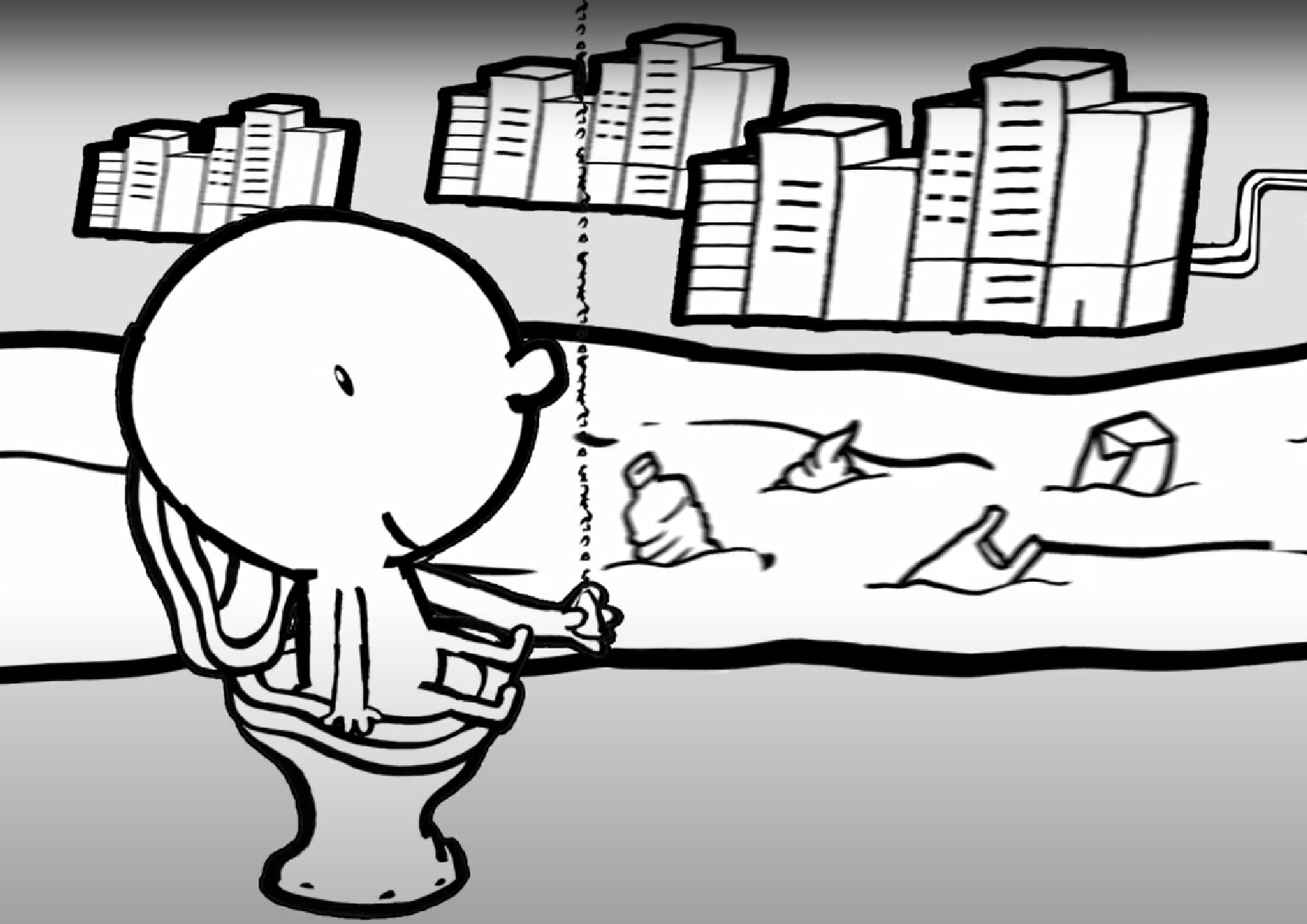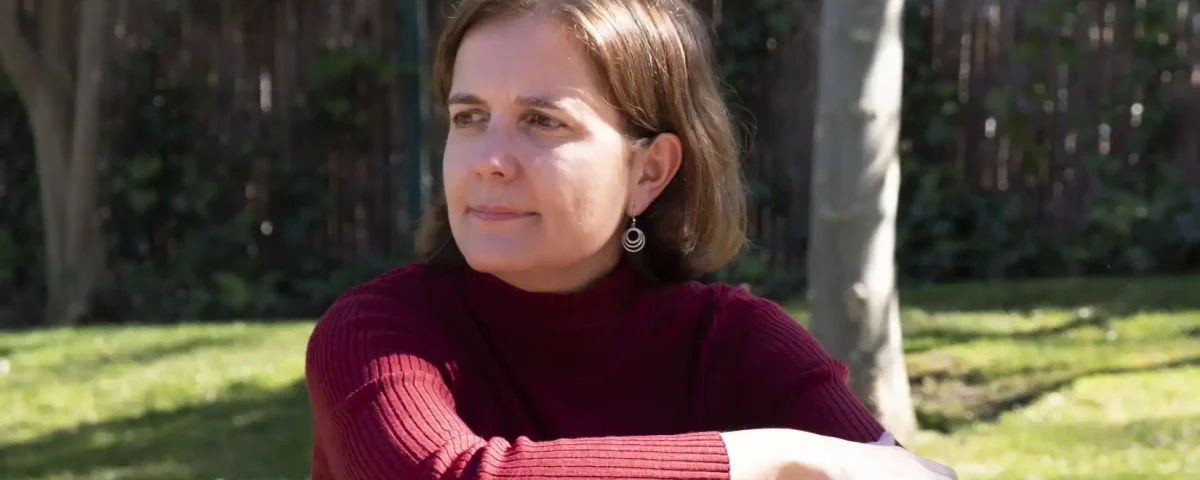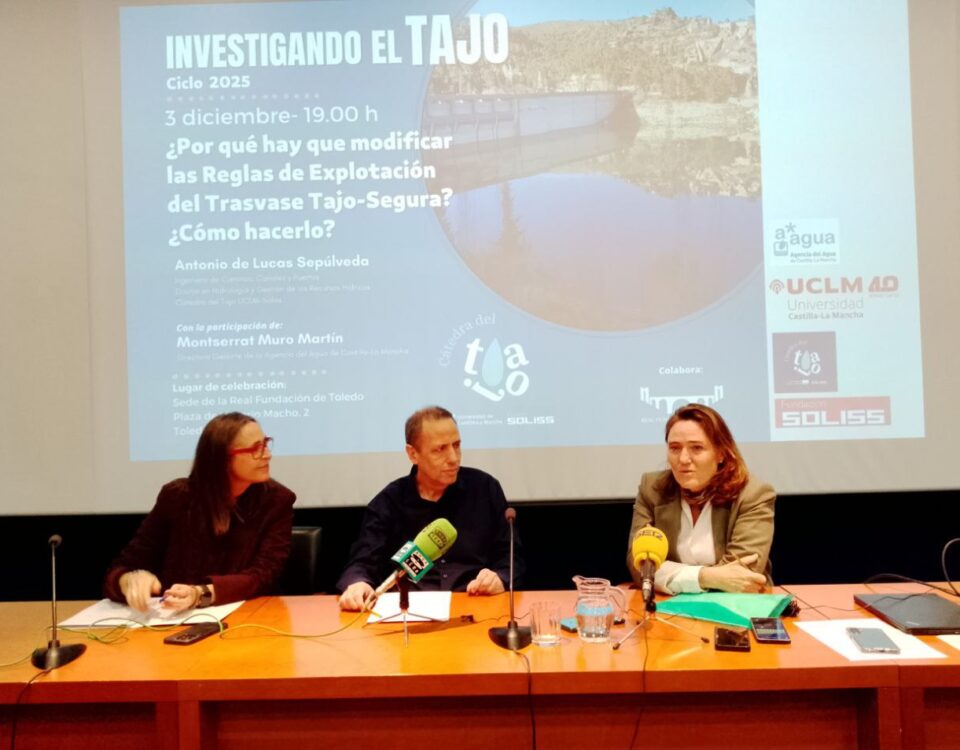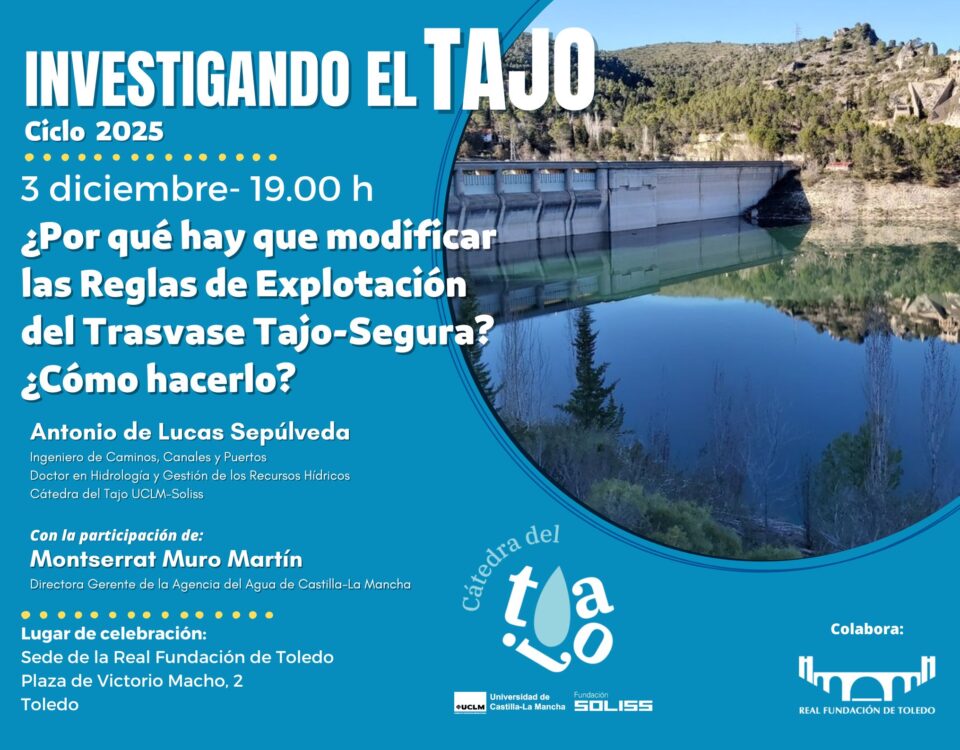
The Chair Answers: Why is the Tagus River in such bad condition?
01/03/2022
La Cátedra del Tajo UCLM-Soliss recomienda: «El Tajo», una animación de dos minutos que resume los problemas del río
21/03/2022- Reproduction of the interview with Nuria Hernández-Mora, partner of the New Culture of Water Foundation and member of the UCLM-Soliss Tagus Chair, which appeared in El Español and made by María Marañón.
March 16, 2022
María Marañón
La cofundadora de la Fundación Nueva Cultura del Agua analiza la situación de los recursos hídricos en España y califica al trasvase Tajo-Segura como «locura ‘ingenieril'».
I transcribe the interview to Nuria Hernández-Mora in a rainy day. Is expert in water resources management, territorial planning and environmental sustainability. Co-founder of the New Water Culture Foundation, has been promoting, for 20 years, a more rational and sustainable management of water policy.
Su fundación, explica, está formada por profesionales procedentes de diferentes ámbitos (académico, empresarial, cultural, social…) que comparten una «visión del water as heritage that must be protected y gestionar con criterios de sostenibilidad, transparencia y equidad».
They also have several lines of work. These, says Hernández-Mora, involve dialogue with the public administrations responsible for managing water and with society, and support for social movements that work in the territory to defend the vision of water as a common heritage.
«Igual que está socialmente aceptado que tenemos que proteger nuestro patrimonio histórico-artístico, hay que entender que nuestros ríos, nuestros ecosistemas acuáticos, nuestro paisaje son también parte de nuestro patrimonio», aclara.
Does Spain have a drought problem?
Drought is an intrinsic characteristic of our Mediterranean climate. Generally, every 10 years we have a period of more or less intense drought. We've had a spell with less rain, but it doesn't seem like it's a particularly severe drought. What we have in Spain is a problem of water scarcity, which is not the same as drought. Water demands exceed available resources.
Therefore, the problem is not so much the drought but how we manage water. In Spain we have put such pressure – of extraction, alteration and pollution – on the natural hydrological cycle and dependent systems, that we have little room for maneuver when a drought hits. In the hydrographic basins of the Guadalquivir, Guadiana, Segura and Júcar, to name a few, the rights granted exceed existing resources.
If the diagnosis is so clear, why don't the administrations solve the problems? What pressures are there?
From a scientific point of view, the diagnosis is clear. The European directives are in line with these scientific consensuses. In addition to a problem of scarcity, overexploitation, and occupation of the river plain, there is a very serious problem, which is the loss of quality and contamination of supply sources, fundamentally due to diffuse contamination from agricultural activities.
In 1996, a publication by the Círculo de Empresarios on water policy and economics in Spain spoke of “water political community.” It was made up, according to the authors, of three lobbies: irrigation, large construction and hydroelectric companies. They are the main beneficiaries of large hydraulic infrastructures. For example, irrigation consumes 80% of the water in Spain. Many analysts claim that this “water political community” has captured the water administration. That has largely been true, although it may be starting to change.
Why this situation?
Around 1920, Spain was a pioneer in river basin management with the creation of the first hydrographic confederations. From the beginning, these public confederations were created as a symbiosis between the administration and economic users. They have survived all political regimes. When democracy arrives, the CC.AA. are incorporated, and some almost testimonial voices from environmental groups and unions.
Why hasn't the situation with democracy changed?
The natural interlocutor of these water management confederations have always been the economic users who have clear interests. They want water for their productive economic activities. I believe that we should not underestimate the benefits of hydraulic development during the 20th century. The costs have also been important. Today's Spain has other needs: the objective has to be to guarantee sustainability.
A change is beginning to occur thanks to the EU Water Framework Directive (2000), which has imposed new objectives for the conservation and recovery of the good state of water and ecosystems. But this change in orientation meets enormous resistance from the traditional “water political community.”
You have worked on the management of the Tagus from a scientific perspective and in support of social movements and environmental groups. Is the Tagus-Segura transfer sustainable?
The Tagus-Segura transfer is an engineering madness.Today it would be inconceivable to design a large transfer from the headwaters of a river, since it conditions the management of the entire basin. It was an idea of the Republic. The large reservoirs that supply the transfer at the head of the Tagus, Entrepeñas and Buendía, were completed in the 1950s. The transfer began to be built in 1971, when the transfer law was approved, and it began operating in 1982.
Is it true that there is less and less water at the head of the Tagus?
Since the transfer was approved until now, a 50% reduction in natural water contributions has been observed at the head of the Tagus. A decrease that is shared by other peninsular rivers and has various causes, including climate change. The transfer is designed for quantities that are already 50% smaller right now and continue to decrease. It is oversized.
There has also been no interest in putting a stop to illegal uses and irrigation in the Segura basin, which is why demand has been increasing. You have a permanent situation of caused shortage. Not only because there are fewer resources than planned, but because demands have been generated that far exceed the available resources.
And what impact do these generated demands have?
Cycles of unsustainability have long-term impacts. The environmental impact of the transfer in the Tagus basin, so evident when passing through Aranjuez or Toledo, feeds back and is reaching the Segura.
The collapse of the Mar Menor It is linked to the irrigation of the Cartagena countryside, which was a traditional dry land area until it began to be massively transformed into irrigated land with the arrival of the transfer. When they do not have water from the transfer, they pump groundwater that, after years of cultivation and use of intensive fertilizers, has a very high concentration of nitrates.
Therefore, in order to irrigate it, it needs to be subjected to a denitrification process. Otherwise, the water has so many nitrates that it burns the plant. The discharges from these denitrifiers – many illegal – end up in the Mar Menor.
Given the appearance of thousands of dead fish in the Mar Menor, the German supermarket Aldi has threatened not to buy vegetables from Campo de Cartagena if the pollution problem is not resolved.
That is the beginning of the solution. In the end, we are the consumers who can influence our purchasing choices.
It is known that resources are becoming less and less. It was known that the Mar Menor was undergoing an accelerated eutrophication process. Furthermore, these types of lake ecosystems have a point of no return. They can be recovered from spills and extractions if they are released from pressure. But there comes a time when the pressure is such that he collapses and recovery is very difficult. That is what the Mar Menor has done.
But has Murcia based its growth and wealth on agriculture?
The agricultural sector in Murcia represents 13% of employment and 4% of the GDP.
Well, it's not that much.
Including the agroindustrial sector, you can go to 10% of GDP. Therefore, it is a discourse created by politicians and economic users. 60% of Murcia's economy comes from the services sector. The Mar Menor, now at risk, is the goose that lays the golden eggs.
In my opinion, it is a serious issue of prevarication. Scientists have been warning for 25 years, but for decades there has been absolute resistance to seeing that reality. On the other hand, the decrease in the resources of the Tagus and its need for recovery mean that the days of the Tagus-Segura transfer are numbered.
Political leaders have the responsibility to begin a process of socioeconomic transformation, because there are thousands of families that depend on this. It is your responsibility to think twenty years ahead, not in the next electoral cycle. Now, little by little, due to social outcry, measures are being taken.
Are the fines for contamination of water resources still ridiculous?
At the state level they are not enough to be a deterrent. At European level, we pay million-dollar fines every month for not complying with two directives: for nitrate pollution and for lack of wastewater treatment.
The number of small and medium-sized towns that have their traditional sources of supply, generally aquifers, contaminated by nitrates is enormous. From the New Water Culture Foundation we are preparing a report to draw attention to this problem and promote the protection of water sources.
And how are they supplied?
The most common solutions are connection to other supply sources or the installation of denitrifiers, with the cost that this entails for the citizen.




